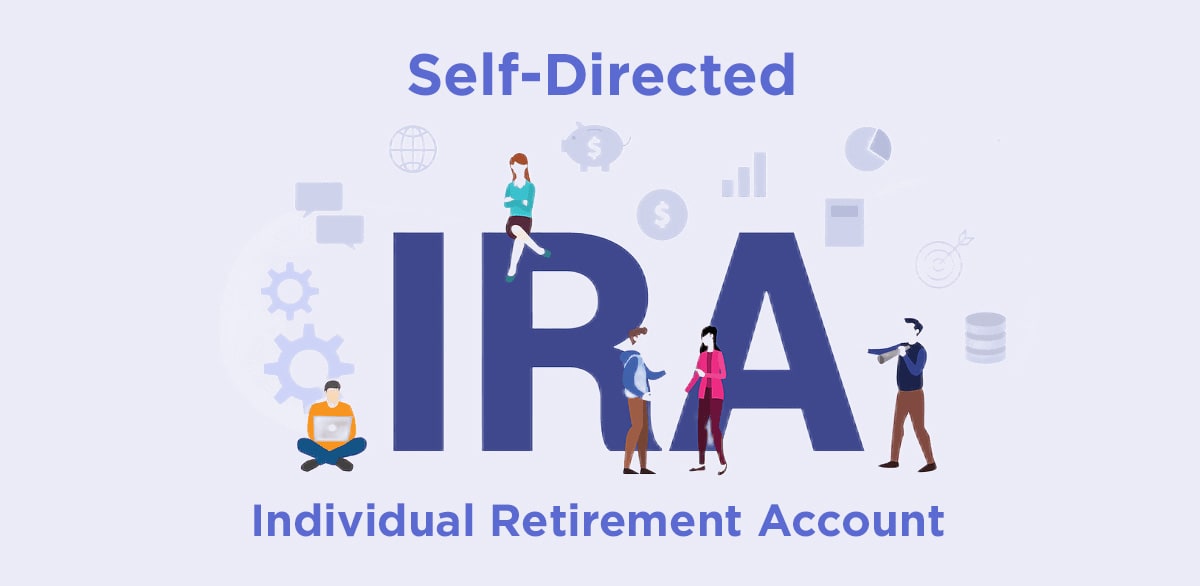
If you’re looking for greater investment freedom for your nest egg, a self-directed IRA might be the answer to your financial prayers. This little-known retirement account packs all the advantages of a standard retirement plan while giving you more control and flexibility.
What is a self-directed IRA?
A self-directed IRA is a type of retirement plan that allows you to hold a variety of alternative assets not permitted in mainstream retirement accounts. Investors commonly use this account to diversify their nest egg for greater stability and growth throughout retirement. Similar to other retirement plans, a self-directed IRA makes it possible to invest pre-tax dollars for optimal returns.
You may also see this kind of retirement plan referred to as a gold IRA or precious metals IRA, due to the types of assets typically held in the account. Officially, the IRS calls it a participant-directed IRA. Regardless of the name or investments it holds, a self-directed IRA functions the same in all scenarios.
How does a self-directed IRA work?
The key to setting up a self-directed IRA is finding a custodian or trustee to administer the account on your behalf. These providers have to meet strict guidelines set forth by the IRS to prove the account fulfills all legal requirements. A custodian is commonly a bank, saving and loan association, or federally-insured credit union, although the IRS accredits many different kinds of trustees. Once your account is set up, it’s straight-forward. There are annual fees, IRA contributions to make, and required minimum distributions (RMDs) once you’ve reached a certain age.
Contributing to your IRA allows you to protect a certain amount of money from the [government].–Precious Metals Advisor John Karow
What assets can be held in a self-directed IRA?
While standard retirement accounts limit you to paper assets such as stocks or bonds, a self-directed IRA permits investments in a diverse range of non-traditional assets. The IRS only forbids a couple of investments, so the possibilities are theoretically limitless. In practice, however, IRA custodians only tend to host a handful of alternative assets. Some of the most popular self-directed IRA assets include:
Real Estate
Real estate has always been a popular investment vehicle, but most retirement accounts limit investors to real estate investment trusts (REITs). A self-directed IRA, on the other hand, allows investors to put their retirement savings in physical properties. Both residential and commercial properties are permitted. You get the advantages of property appreciation and rental income within the account while benefitting from deferred taxes.
Business Investments
Standard retirement plans only allow investments in publicly traded companies. Conversely, a self-directed IRA permits direct investments in private companies. Some possible options include a startup, limited liability company (LLC), C corporation, limited partnership (LP), and private placement. It’s crucial to make sure your private equity investments aren’t in violation of IRS restrictions though.
Cryptocurrencies
Over the past few years, cryptocurrencies have become a popular investment through self-directed IRAs. Many people seek out these assets in the hopes of abnormally high returns and increased privacy. However, many uncertainties surround the extreme volatility, future regulations, and security concerns over digital currencies. Many custodians steer clear of these assets, so you’ll need to find a specialized provider.
Promissory Notes (Loans)
The IRS even allows investors to use their self-directed IRAs like mini-banks by offering loans to individuals or entities. All you need is a promissory note to validate the transaction, although there are limitations on the type of people who can receive the loan. For example, you and your family members wouldn’t qualify. You’re also responsible for determining a borrower’s creditworthiness and dependability.
Precious Metals
Precious metals are one of the most popular assets held in self-directed IRAs. Known commonly as precious metal IRAs, these accounts can hold a variety of tangible metal assets such as coins, bars, and rounds. IRA-eligible metals are limited to gold, silver, platinum, and palladium assets with further restrictions based on purity, weight, and asset type. Precious metal IRAs are preferred for their tendency to rise in value as traditional markets falter, making them reliable hedges against inflation.
👉 Related read: Can I Hold Physical Gold in My IRA?
What can a self-directed IRA NOT invest in?
Although a self-directed IRA grants you greater freedom than standard IRAs, there are still some restrictions on the types of assets you can hold. The IRS draws the line at collectibles including gems, art, alcoholic beverages, and antiques. You’re also prohibited from purchasing life insurance through a self-directed IRA. The businesses you could invest in through the plan are also subject to these limitations.
Benefits of a Self-Directed IRA vs Traditional IRA
Exposure to hard assets.
The clearest advantage of a self-directed IRA over a traditional IRA (along with other mainstream retirement accounts) is the ability to invest in hard assets. These physical investments can strengthen your nest egg to protect against economic downturns.
Increased diversity.
Diversification is a well-known principle of smart retirement savings, but traditional IRAs limit you to paper assets. Their self-directed IRA cousins allow for true diversification which requires some holdings in physical investments with inherent value.
Greater control and privacy.
The name says it all. A self-directed IRA puts you in the driver’s seat when it comes to retirement investments. You get to choose what kind of assets build up your nest egg and when it’s time to buy and sell. Plus, you’re protected from market manipulation.
Minimized exposure to market volatility.
The whole point of diversification is to protect your nest egg from the ebbs and flows of the market. Unfortunately, traditional IRAs leave your savings subject to the volatility of the stock market. Alternatively, self-directed IRAs act as a bulwark against those ups and downs.
Are self-directed IRAs a good idea?
It really depends on your specific investment goals. Tax deferred growth with physical assets can be a nice benefit. Additionally, if you’re looking for a way to diversify your nest egg for performance and increased stability during economically turbulent times, a self-directed IRA is an excellent choice. It can become a crucial component of an overall investment strategy. Of course, there are some considerations to setting up a self-directed IRA such as the lack of dividends or interest. Speaking with a precious metals advisor, such as SBC Gold, can make it easier to determine if a self-directed IRA is a good match for your retirement objectives and budget limitations.
If you’re interested in learning more about holding physical gold and silver in an IRA, give us a call or check out our free Precious Metals IRA Guide.


